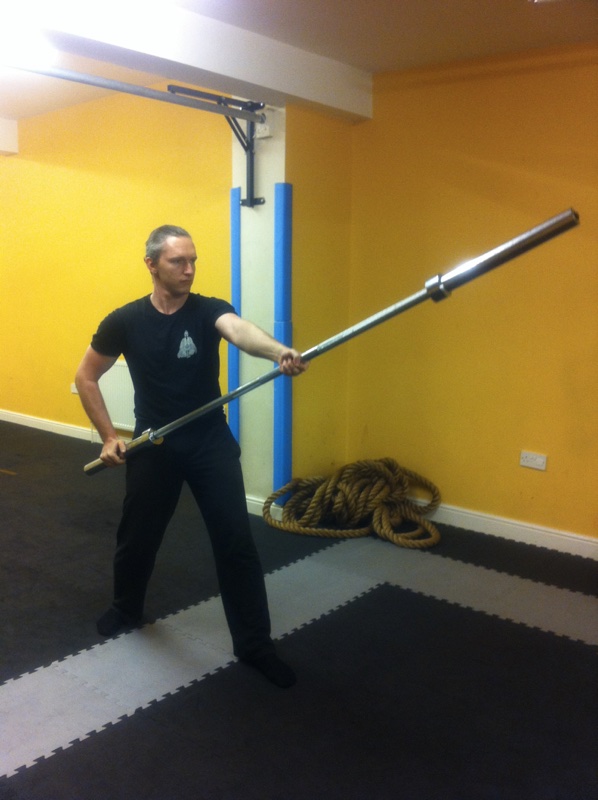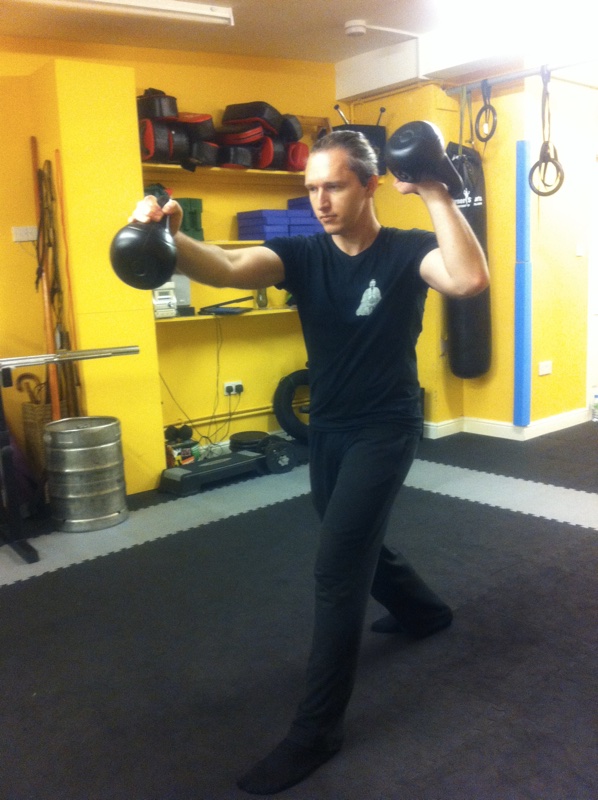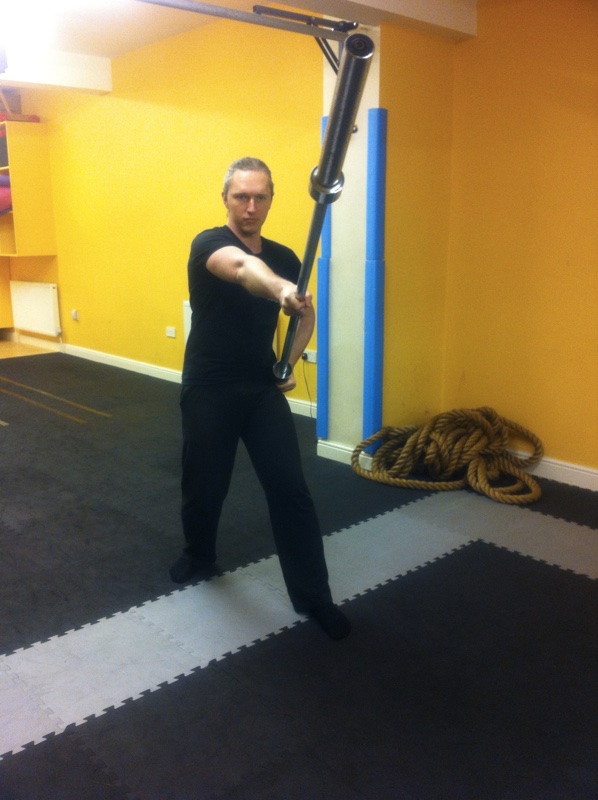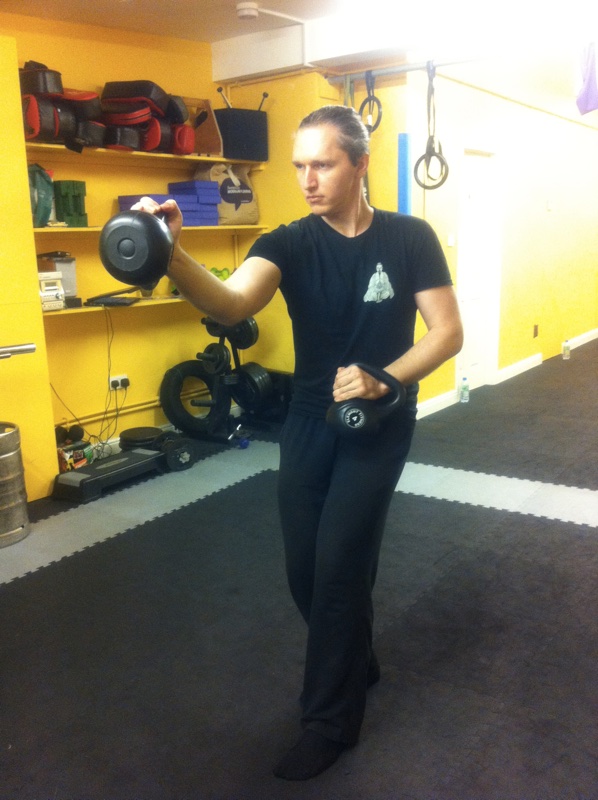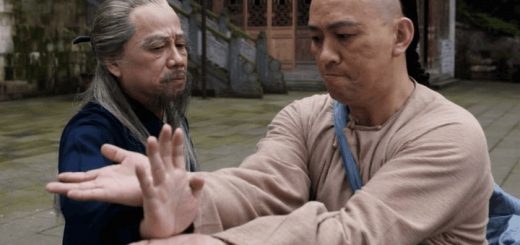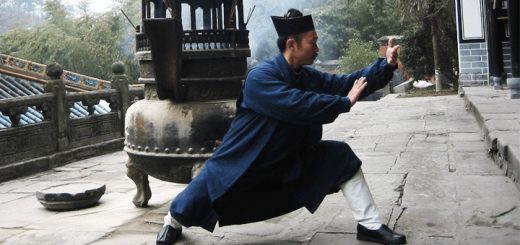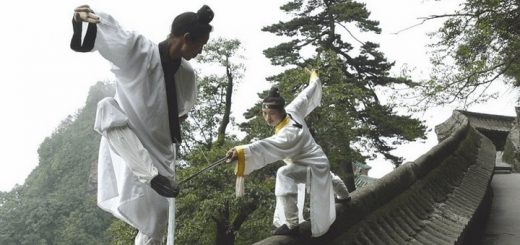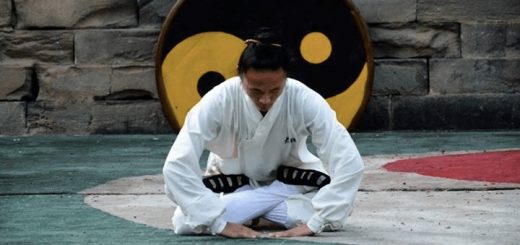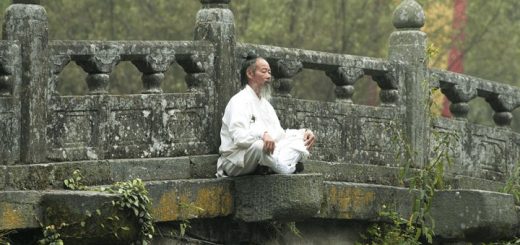Xingyi Quan

Xingyi Quan (形意拳) is a form of Chinese martial arts. The name is translated as “the fist form and intention (thought).” The “form” implies external movements used in a battle, and Yi (intention, thought) – a mind derived from a heart. Xingyi is an internal style, imitating forms and internal qualities of twelve animals in combat.
All martial arts can be roughly divided into external and internal styles. External styles are focused only on work with the physical body, internal styles – on accumulation of Qi in the body and work with a force Jin.
In fact, both, external and internal styles, are based on fighting Qigong exercises. In external styles, at first the physical body is trained through a hard Qigong, and, with the growth of skills, people gradually become “soft”, and practice a soft Qigong. In internal styles, everything starts with mastering a soft Qigong, and then accumulated Qi is used in physical techniques. There is a saying: “In external styles the first place is given to Li (muscle power), while the second – to Qi. And conversely, in internal styles the first is Qi, and then Li”. Or, as another saying states, “external styles go from outside to inside, and internal – from inside to outside.”
Inasmuch as all the styles of Chinese martial arts in one way or another use Qigong exercises, to identify internal or external style is quite difficult. Traditionally, training methods were handed down from generation to generation in secrecy, and only during the last one hundred years they have gradually become opened to the public. Variety of styles of martial arts is large, and each of them has its own characteristics and advantages.
How do you determine which one is right for you? It should be understood that effectiveness of a chosen style primarily depends on a particular situation and skills of your opponent. It often turns out that a person who has studied a more simple style for not very long time overmasters those who studied for long, and a more intricate style. Sure enough, it is sometimes better to learn a few simple and effective techniques than a lot of techniques that you can never use.
Some of the advantages of studying Xingyi Quan
- In Xingyi Quan Qi development is of a great importance, so it is considered as an internal style. The purpose is to control the circulation of Qi and achieve a higher level of energy, keep a calm and peaceful mind. The basic forms are simple and easy to learn. On a basis of these movements, hundreds of variations are built, and their possible applications are endless. Therefore, this style is also suitable for beginners.
- The principles of Xingyi Quan are simple , but their effects are deep and numerous. Within training, you will realize that your understanding of the theory – both physical health and martial arts – is deepening.
- Health promotion. Practicing the five basic movements, you will get rid of the stagnated Qi and improve its circulation, make five of major organs – heart, lungs, kidneys, liver and spleen – healthier.
- An effective style of fighting. Using the five basic movements, one can properly combine them to produce an effective fighting style. The style has simple principles and is easy to learn, and is often more effective than the styles with overcomplicated technology and the theory of combat. Xingyi’s strategy is the attack, but this attack is not chaotic. Long practice will help to achieve the spiritual courage and composure, you will remain calm and self-controlling. In the same time, your spirit will be in an extremely productive state.
Some of the distinguishing features of the style of Xingyi Quan
- The body must be natural and feel comfortable, then Qi is flowing freely and smoothly in a physical body. At the beginning of both, offensive and defensive movements, the body is soft, so that one can let the Qi enter the limbs. After that, during the hit, the body should tense for a moment, in order to show Jin. Jin in Xingyi is like an osier, soft in the beginning and tough in the end. Jin is manifested as a burst of a cannon ball.
- Strategy of a battle is more active than passive. As a protection, offensive movements are commonly used. The emphasis is on direct movements made forward and backward, but dodging and sideward movements are also used.
- Thanks to the techniques used and Xingyi strategy it can be very effective in a fight at a short distance. Although kicking movements are used, almost all of them are focused in the area that is not higher than the abdomen.
Thus, Xingyi Quan is an internal martial art that uses a special martial art requiring internal development, in which Xin and Yi are combined. Xin is “emotional mind”, which leads one into a state of excitement, agility and improved reaction, and Yi is “mind of wisdom”, which gives a peace of mind and the ability to show a good judgment.
History of martial arts is based on the fact that the roots of any system lie in ancient times, and always stand on the origins of legendary and great personalities. For Xingyi Quan, these are Damo and Yue Fei.
Damo is linked with Chan Buddhism and Shaolin monastery. He is considered to be the creator of several treatises and systems of exercises, which became the basis for the development of many areas of Qigong and Wushu. However the legends quite lack justifying facts, for the mythology of martial arts it is not so important.
The second legendary figure, which is connected with the foundation of the style, is a famous commander of the Southern Song Dynasty (XIII) Yue Fei. Legends connect his training with the Shaolin Monastery and treatises of Damo. After becoming a military leader, he developed a system of military training of army soldiers, which successfully fought against the nomads invading the territory of the empire. His name is regarded to the creation of several styles of martial arts and writing treatises, in particular, a treatise on the theory of Xingyi Quan.
Historical documents have very small amount of information about Damo and Yue Fei. However, whereas there’s no information about creating of the technology of Xingyi Quan, there are numerous stories and legends referring to them as to its creators.
Knowledge transmission lines in Xingyi Quan in Zhen Dao Pai
Li Nengran (李能然) — Guo Yunshen (郭云深) — Xu Zhanao (许占鳌) – Zhao Qingxiang (赵庆祥) – Xiao Gongzhuo (萧公卓) – Lu Shiyang – Vitaly Filbert
